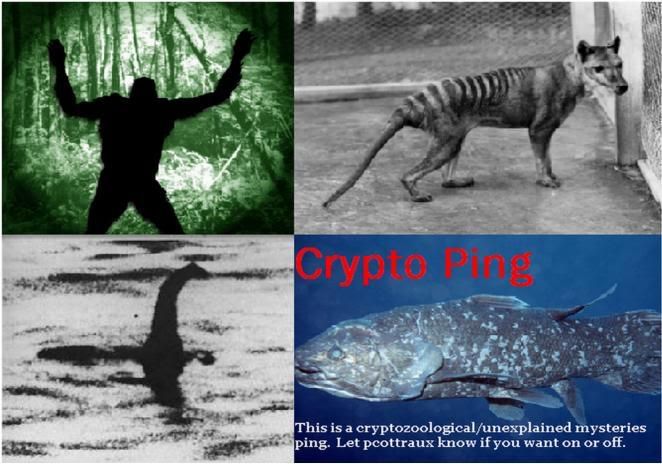Posted on 06/27/2007 7:10:02 AM PDT by presidio9
A University of Adelaide project led by zoologist Dr Jeremy Austin is investigating whether the world-fabled Tasmanian Tiger may have survived beyond its reported extinction in the late 1930s.
Dr Austin from the Australian Centre for Ancient DNA is extracting ancient DNA from animal droppings found in Tasmania in the late 1950s and ‘60s, which have been preserved in the Tasmanian Museum and Art Gallery.
“The scats (droppings) were found by Eric Guiler, Australia’s last real thylacine expert, who said he thought it more probable they came from the Tasmanian Tiger rather than a dog, Tasmanian Devil or quoll,” Dr Austin said.
The Tasmanian Tiger, or thylacine, was widespread in Tasmania when European settlers arrived in 1803. Resembling a large, long dog with stripes, a heavy stiff tail and big head, the thylacine was the world’s largest marsupial carnivore at the time of its extinction in 1936 when the last one in captivity died in Hobart Zoo.
“If we find thylacine DNA from the 1950s scats it will be significant,” Dr Austin said. “The last Tasmanian Tiger killed in the wild was in 1918, so there’s a 20-year gap between a wild sighting and one in captivity. It’s a long shot that they were still around in the 1950s, but we can’t rule it out at this stage.”
Dr Austin is also extracting DNA from bones of both the Tasmanian Tiger and Tasmanian Devil found on mainland Australia. Scientists believe the Tiger lived on the mainland 2000 years ago and the Devil 500 years ago.
“The DNA may be able to reveal they were different species to the Tasmanian animals, although it’s unlikely. It’s only been 10,000 years since Bass Strait flooded and Tasmania was separated from the mainland. That’s not a long period of time in evolutionary terms.
“The main reason people think they may have been different species is that the Tasmanian Tiger was much bigger than its mainland cousins. That’s not surprising given the climate because the colder the environment, the larger the animal.”
Dr Austin is working in collaboration with Oliver Berry from the University of Western Australia, another zoologist who is extracting ancient DNA from scats in Tasmania to find evidence of foxes.
Pictures ?
Hey, what can I say. They were delicious!
The “Finger” as he is known to his contemporaries, was of the further opinion that Gore/bore is certainly no tiger, and closer to a "Buffalo Giganticus”, a species who produce copious amounts of excrement, particular in the area of the United States known at DC. A particularly productive sub-species is the “Bufoonis Kennedy”, also known for drowning it’s mates.
http://www.youtube.com/watch?v=9gCov0PXkVo
I’ve always been amazed by their huge mouths. At the end of the clip he opens it wide; it’s amazing.


But you must admit that finding a Bigfoot would be almost as good.
Thanks pcottraux.
http://www.freerepublic.com/focus/f-news/1788641/posts?page=17#17
http://www.science-frontiers.com/sf043/sf043p08.htm
http://www.science-frontiers.com/sf046/sf046p10.htm
http://www.science-frontiers.com/sf069/sf069b06.htm
|
|
|||
Gods |
Note: this topic is from 2007. |
||
|
· Discover · Nat Geographic · Texas AM Anthro News · Yahoo Anthro & Archaeo · · The Archaeology Channel · Excerpt, or Link only? · cgk's list of ping lists · |
|||
Disclaimer: Opinions posted on Free Republic are those of the individual posters and do not necessarily represent the opinion of Free Republic or its management. All materials posted herein are protected by copyright law and the exemption for fair use of copyrighted works.